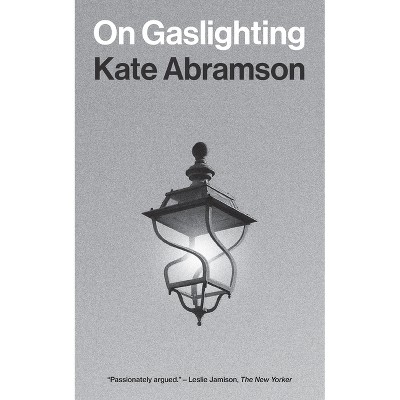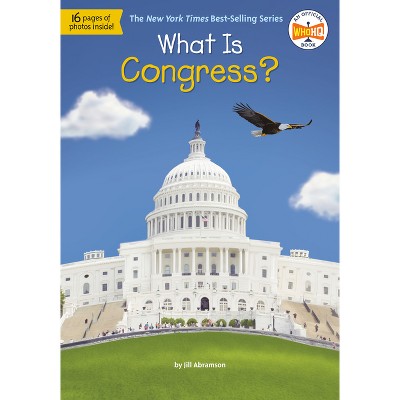Sponsored

Obsolescence - by Daniel M Abramson
In Stock
Sponsored
About this item
Highlights
- In our architectural pursuits, we often seem to be in search of something newer, grander, or more efficient-and this phenomenon is not novel.
- About the Author: Daniel M. Abramson is professor of architectural history and director of architectural studies at Boston University.
- 208 Pages
- Architecture, Study & Teaching
Description
About the Book
Things fall apart. But in his innovative, wide-ranging, and well-illustrated book, Daniel Abramson investigates the American definition of what falling apart entails. We build new buildings partly in response to demand, but even more because we believe that existing buildings are slowly becoming obsolete and need to be replaced. Abramson shows that our idea of obsolescence is a product of our tax code, which was shaped by lobbying from building interests who benefit from the idea that buildings depreciate and need to be replaced. The belief in depreciation is not held worldwide which helps explain why preservation movements struggle more in America than elsewhere. Abramson s tour of our idea of obsolescence culminates in an assessment of recent tropes of sustainability, which struggle to cultivate the idea that the greenest building is the one that already exists."Book Synopsis
In our architectural pursuits, we often seem to be in search of something newer, grander, or more efficient-and this phenomenon is not novel. In the spring of 1910 hundreds of workers labored day and night to demolish the Gillender Building in New York, once the loftiest office tower in the world, in order to make way for a taller skyscraper. The New York Times puzzled over those who would sacrifice the thirteen-year-old structure, "as ruthlessly as though it were some ancient shack." In New York alone, the Gillender joined the original Grand Central Terminal, the Plaza Hotel, the Western Union Building, and the Tower Building on the list of just one generation's razed metropolitan monuments. In the innovative and wide-ranging Obsolescence, Daniel M. Abramson investigates this notion of architectural expendability and the logic by which buildings lose their value and utility. The idea that the new necessarily outperforms and makes superfluous the old, Abramson argues, helps people come to terms with modernity and capitalism's fast-paced change. Obsolescence, then, gives an unsettling experience purpose and meaning. Belief in obsolescence, as Abramson shows, also profoundly affects architectural design. In the 1960s, many architects worldwide accepted the inevitability of obsolescence, experimenting with flexible, modular designs, from open-plan schools, offices, labs, and museums to vast megastructural frames and indeterminate building complexes. Some architects went so far as to embrace obsolescence's liberating promise to cast aside convention and habit, envisioning expendable short-life buildings that embodied human choice and freedom. Others, we learn, were horrified by the implications of this ephemerality and waste, and their resistance eventually set the stage for our turn to sustainability-the conservation rather than disposal of resources. Abramson's fascinating tour of our idea of obsolescence culminates in an assessment of recent manifestations of sustainability, from adaptive reuse and historic preservation to postmodernism and green design, which all struggle to comprehend and manage the changes that challenge us on all sides.Review Quotes
"Abramson uses design as evidence to read society's responses to the notion of obsolescence, rather than as mere illustration. And the resulting narrative is one of the most coherent and powerful explanations I've ever read of the seemingly disparate architectural movements of the past century: interwar conservatism, Brutalism, historic preservation and Post-Modernism. . . . The conclusion of Obsolescence is brilliant. Now superseded by sustainability, obsolescence is now itself obsolete. . . . The ideas of obsolescence and sustainability, in the end, are just ways to justify change. They are belief systems that preoccupy an era, and then they disappear."
-- "Times Higher Education""Obsolescence is an important book because it directs our attention to a key temporal concept of twentieth century architecture, urbanism, and design. As Abramson ably shows, during the first half of the twentieth century obsolescence developed as a term through which the relationships, or nonrelationships, of permanence and dynamism were mediated. . . . Gathering a broad range of sources, Abramson shows how obsolescence, first applied to buildings by real estate specialists, became embedded in US tax law, thus codifying, normalizing, and monetizing the assumption that over time a building inevitably becomes increasingly less useful, until it must be replaced."-- "Critical Inquiry"
"A persuasive account of the origins of obsolescence in architectural thought."-- "Times Literary Supplement"
"A richly dense and enlightening book that expands how we conceptualize the built environment."-- "Preservation Education and Research"
"Abramson explains that building obsolescence is an invented notion, created by Chicago real estate experts in the 1890s as a way to justify a near-ruthless push for profitable new construction. And once these ideas took root, they'd go global in the twentieth century, a wild reshaping of cities that put older buildings and neighborhoods in constant peril of demolition. . . . The wrecking ball still swings a bit freely in Chicago, with building obsolescence given as the reason. But Abramson's book offers an important rebuttal."-- "Chicago Reader"
"Abramson's dogged pursuit of. . .obsolescence convincingly embeds sustainability into the history of modern architecture, not as a diversion from it, nor as its damning, but as part of a live conundrum."-- "Journal of the Society of Architectural Historians"
"An excellent book. Innovative, penetrating, and compelling. Abramson probes an underlying idea we think we know quite well to weave a much more complicated tale about its ascendance, critique, and adaptations."-- "Randall F. Mason, author of The Once and Future New York: Historic Preservation and the Modern City"
"If obsolescence has been a major topic in consumerism and real estate for over a century, Abramson shows its centrality to the history of modern architecture. His saga moves with grace and precision over an extraordinary terrain, from the surprisingly short life-spans of most early skyscrapers in New York and Chicago to the pseudo-scientific rhetoric about new commercial development in the 1920s, then the transatlantic phenomenon of urban renewal after WWII (in capitalist and socialist countries), on to the global phenomena of megastructures, visionary design, environmentalism, and historic preservation in the 1960s. He concludes by asking how this history can give us new insights about the issues of unpredictability, sustainability, and differences in human perceptions that have become central to contemporary architecture. This brilliantly conceived, inspiring and eloquent book will surely enjoy a long life."-- "Gwendolyn Wright, author of Building the Dream and host of PBS's History Detectives"
"It's impossible to resist declaring Obsolescence timely; nevertheless, it's impossible to deny. Abramson's riveting architectural history of obsolescence moves seamlessly from NABOM to Nabokov. Claiming a longstanding tension between obsolescence and sustainability, he situates both terms within a richly detailed tableau that includes tax code information, close readings of buildings, cultural and economic theory, and texts that range from the late-nineteenth century to the most current architectural writing. Abramson masterfully composes a delightfully taut history across this breadth. Obsolescence will appeal to anyone who takes the time to pause and think about the built environment."-- "Sarah Whiting, dean, Rice School of Architecture"
"Obsolescence is far from an exact science, as Abramson's succinct, thoughtful book Obsolescence: An Architectural History shows. Abramson, carefully transatlantic in his thinking, charts the ebb and flow of ideas which, as he writes 'ran the gamut from accepting that obsolescence would happen to believing that obsolescence should happen', liberating us all from 'history and habit.'"-- "London Review of Books"
"One of Obsolescence's great contributions is to give sustainability a history."-- "Buildings & Landscapes: Journal of the Vernacular Architecture Forum"
"Thoroughly researched, well indexed, and supported by copious notes and black and white illustrations, this brief 156 page volume offers compelling and thought-provoking arguments that make it well worth reading. Written for the architectural history community, Abramson's clear and straightforward language will also make Obsolescence a relevant and accessible read for those interested in the development of real estate, urban planning, and historic preservation."-- "ALRIS/NA"
"While all buildings are subject to the decay and ruin brought by time, Abramson is concerned in this book with a different culprit: obsolescence. In his analysis, this term refers to structures demolished for having outmoded mechanical systems, or insufficient rentable space, or a suddenly unappealing stylistic expression, among many other factors. Such buildings might have survived were it not for shifting economic standards, desires, or tastes. Abramson's overriding concern is how architecture functions within capitalism."-- "Architectural Record"
About the Author
Daniel M. Abramson is professor of architectural history and director of architectural studies at Boston University. Previously, he taught at Tufts University and Connecticut College. He is the author of Building the Bank of England: Money, Architecture, Society, 1694-1942 and Skyscraper Rivals: The AIG Building and the Architecture of Wall Street.Shipping details
Return details
Trending Non-Fiction


Discover more options















